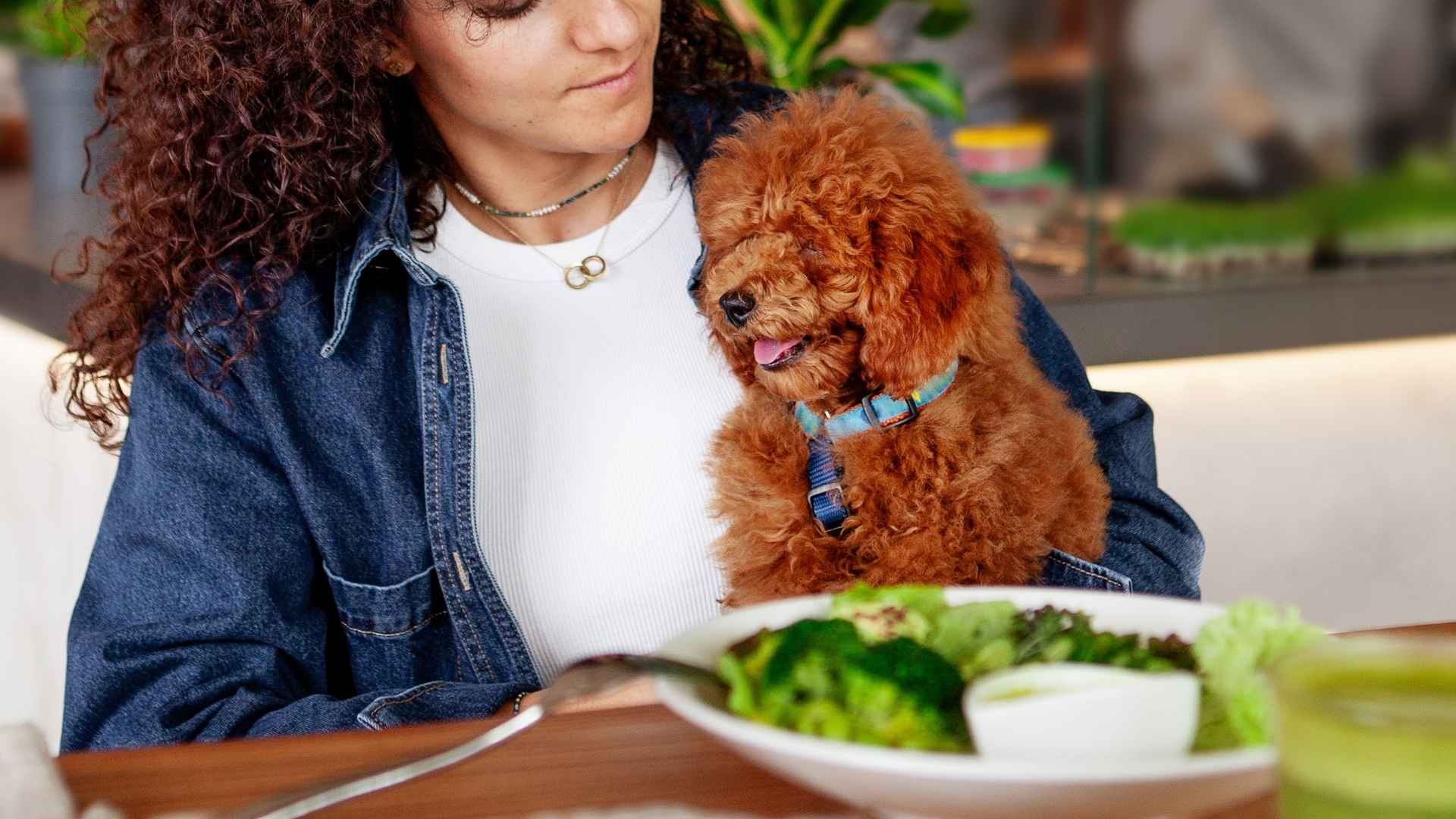Café culture has blossomed into a cherished ritual for many dog owners, blending the enjoyment of a morning latte with the companionship of their four‑legged friends. Around the world, more and more cafés welcome dogs, creating spaces where pets and people can relax side by side.
Certain breeds thrive especially well in this setting, bringing their calm temperament, manageable size, and sociable nature into cozy, bustling environments. They settle under tables, greet baristas with wagging tails, and charm fellow patrons with their presence.
These dogs often embody the perfect mix of adaptability and friendliness, making them ideal companions for urban outings and weekend café visits. Whether perched quietly on a blanket or basking in attention from strangers, these breeds enrich the experience of sipping coffee outdoors or at a corner table inside.
Understanding which breeds excel in café life helps owners choose companions who can share these simple, delightful moments with ease.
Dog Breeds Perfect for Café Visits With Owners
1. Golden Retriever
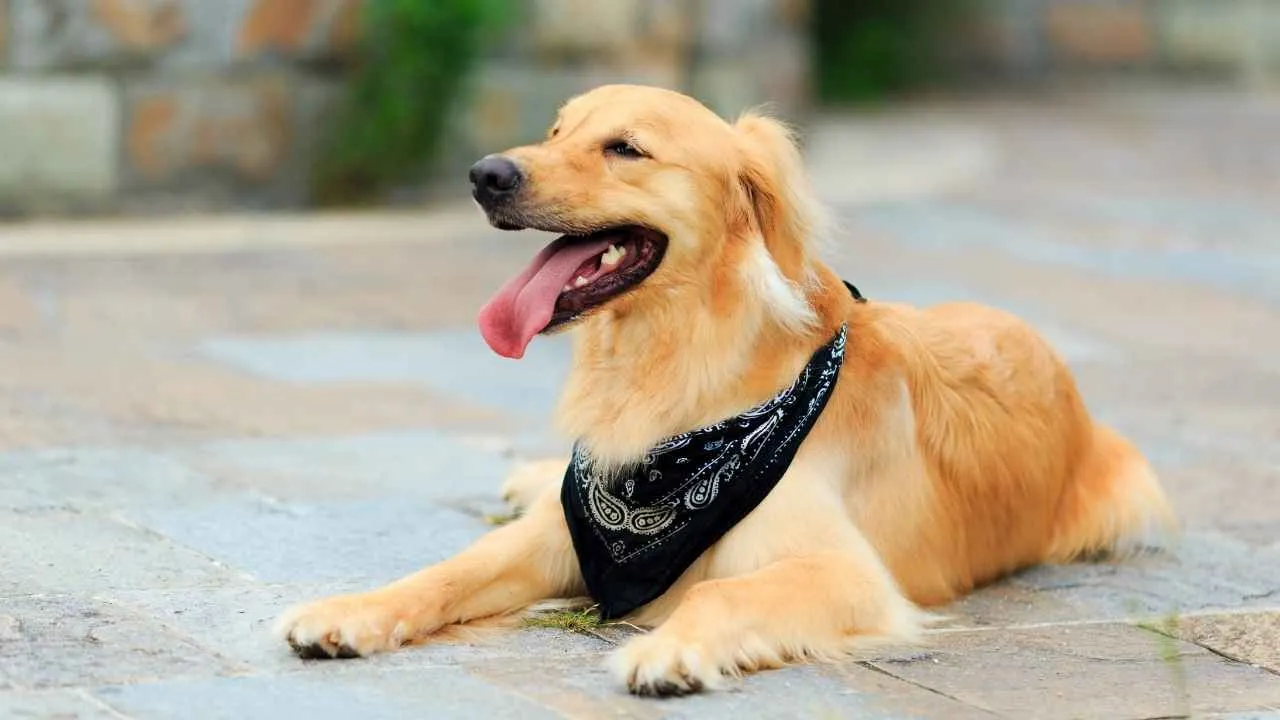
Golden Retrievers were developed in 19th‑century Scotland, where they were bred to retrieve game from land and water. Their creators valued a soft mouth and endless enthusiasm, qualities that remain hallmarks of the breed today. Their long history as hunting companions shaped their intelligence and trainability.
According to the AKC, this breed thrives on human connection and rarely hesitates to greet strangers with a wagging tail. They handle the clatter of dishes and hum of conversation in cafés with an easygoing nature that reassures their owners. A well‑socialized Golden quickly settles under a table, happy to observe the world go by.

Golden Retrievers learn quickly when rewarded with praise or treats, often mastering commands that make public outings smoother. Their natural eagerness to please means they adapt well to new routines. They need mental stimulation as much as physical activity to keep them balanced.
Their thick, water‑repellent coat requires frequent brushing to keep it healthy and to manage shedding. The dense undercoat changes with the seasons, and loose hair is part of life with a Golden. Keeping up with grooming is key to their comfort, especially if they are out and about often.
Size plays in their favor: they are large enough to be sturdy but not imposing in shared spaces. Their warm demeanor and patient temperament make them as welcome in cafés as in family living rooms.
Fun Fact
The first Golden Retriever was registered in England in 1903, and the breed was recognized separately from other retrievers only a few years later.
2. Boston Terrier
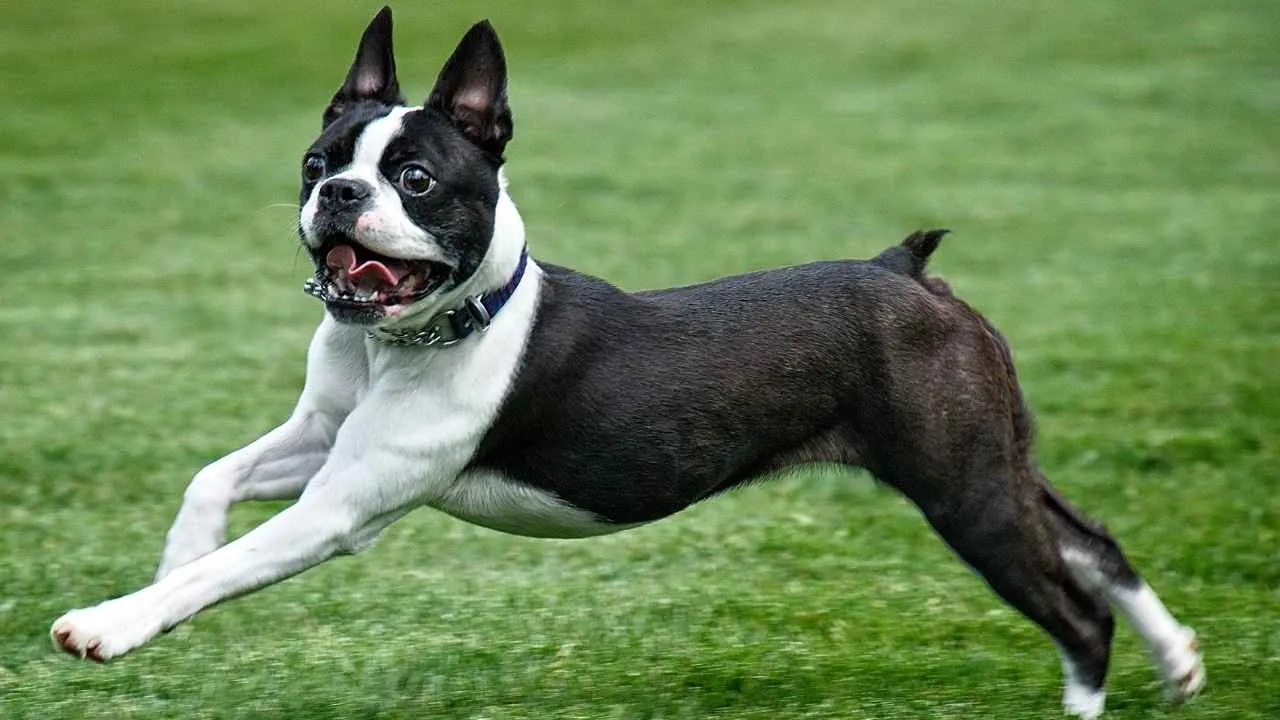
Boston Terriers trace their beginnings to the streets of Boston in the late 1800s. Bred from Bulldogs and Terriers, they transformed from rougher working dogs into charming companions with a dapper, tuxedo‑like coat. That polished appearance earned them the nickname “the American Gentleman.”
Their small, compact build makes them effortless café companions. They can curl beneath a chair or perch quietly at their owner’s feet, drawing smiles without taking up much space. Their cheerful disposition fits the easy atmosphere of a Saturday coffee stop.
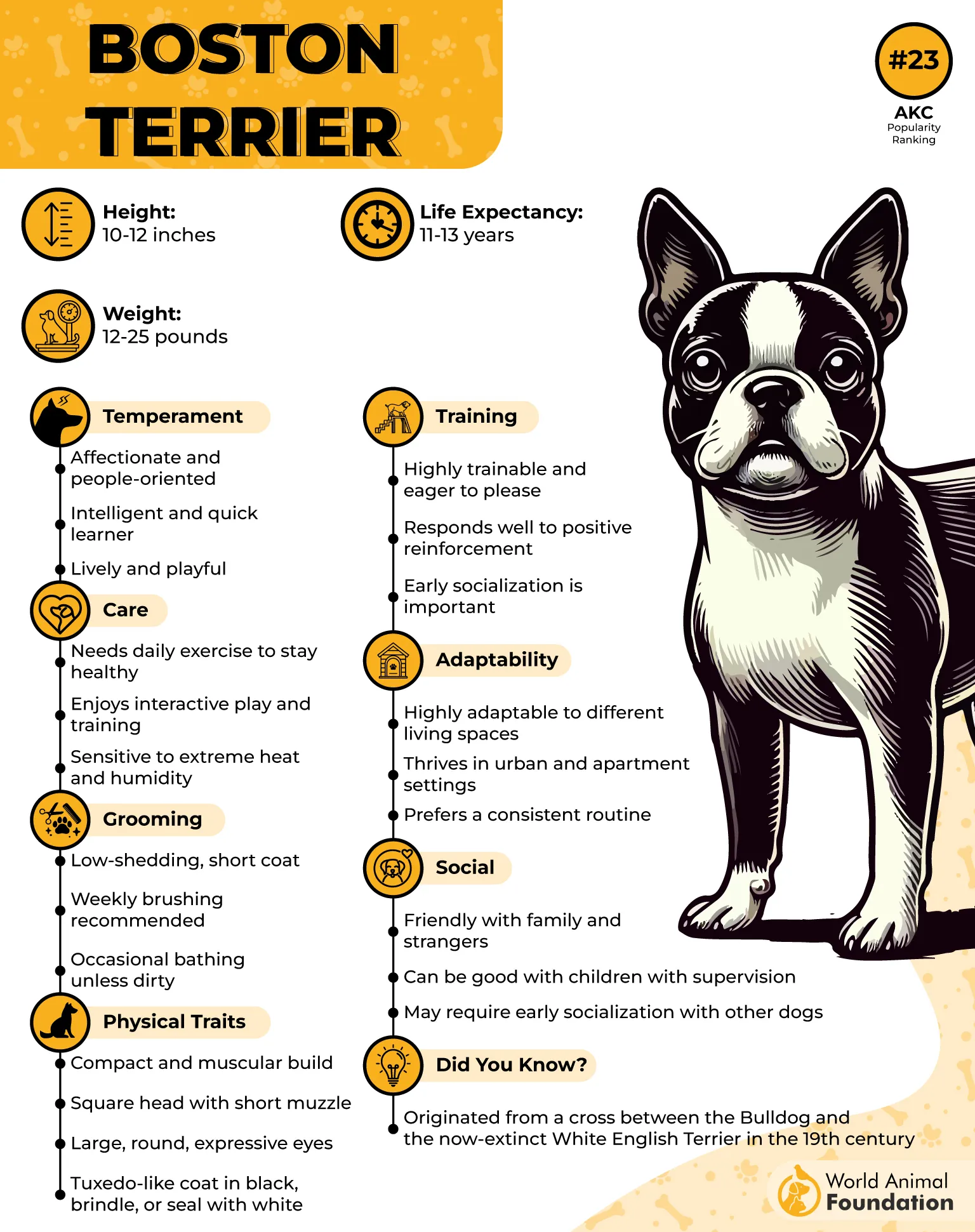
Boston Terriers are bright and quick to catch on, though they prefer short, fun training sessions. Long, repetitive drills tend to bore them, but a handful of treats and encouraging words bring out their best focus. This combination of smarts and playfulness makes them delightful in public settings.
Grooming is straightforward thanks to their smooth coat and minimal shedding. A quick brush now and then keeps their coat shiny, and they rarely carry that “doggy” smell some breeds do. This low‑maintenance nature makes them easy for busy urban owners.
Although they can be spirited, Boston Terriers are not strong guard dogs. Their instinct is to charm, not to challenge, which is exactly what café patrons tend to appreciate.
Fun Fact
Boston Terriers were one of the first truly American breeds and even became the official dog of Massachusetts.
3. Labrador Retriever

The Labrador Retriever’s roots lie on the coast of Newfoundland, where early fishermen needed an agile, water‑loving dog. These sturdy retrievers later made their way to England, where they were refined into the breed we see today. Their history built the friendly, dependable nature that defines them.
Labs have an unshakable reputation for good temper and approachability. They handle bustling cafés with an open, curious attitude and tend to greet new people as friends. It is rare to see a Labrador overwhelmed by a busy environment.
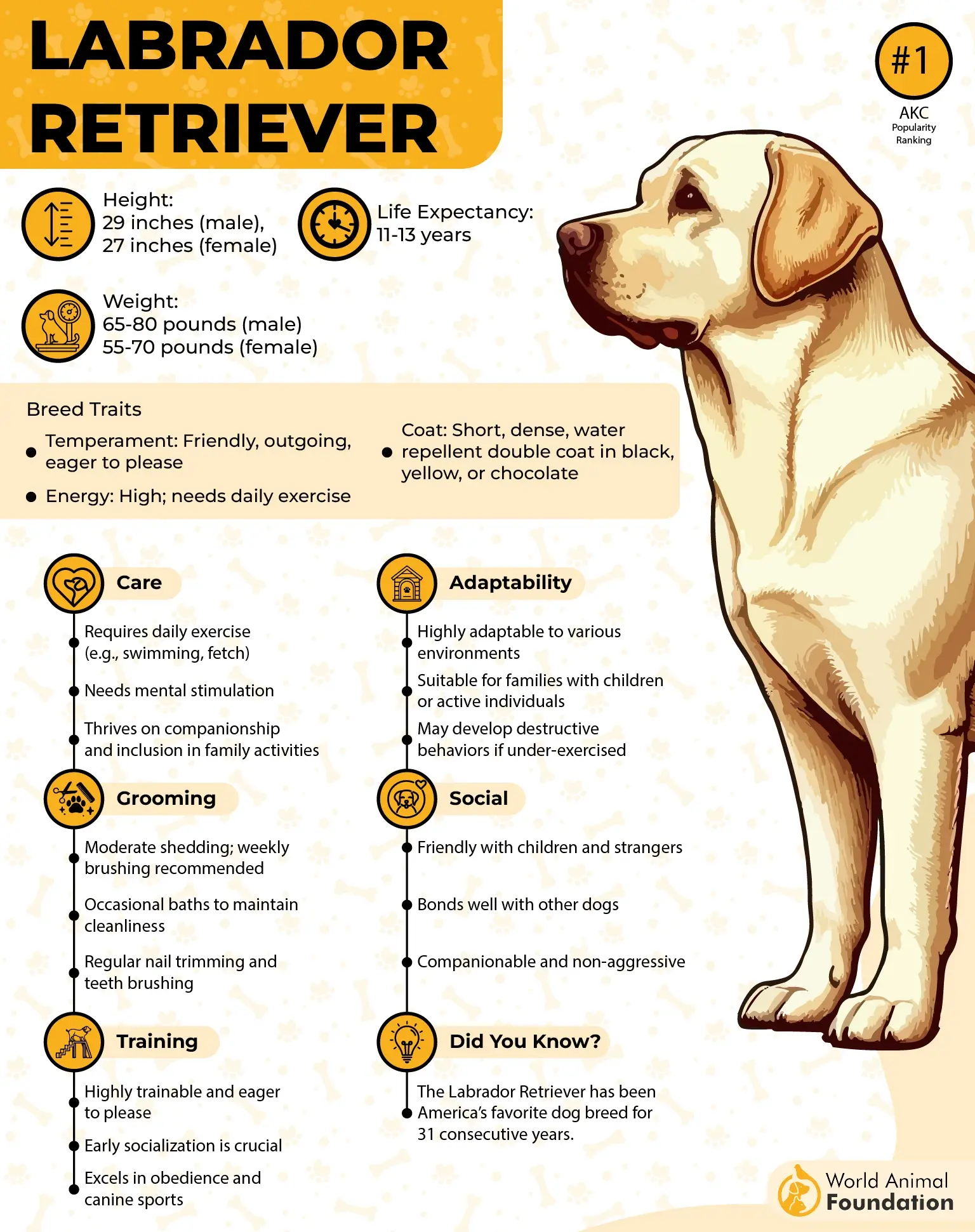
They are highly trainable and thrive when given tasks. A Labrador trained in simple commands like “down” or “stay” is a dream in public spaces, settling quietly and waiting for cues. Their eagerness to work for praise makes them consistent companions.
Their short, dense coat needs brushing several times a week, particularly during seasonal shedding. It is easy to maintain, but can leave a sprinkling of fur on clothes and furniture. A quick grooming routine helps keep them tidy for café outings.
Labradors are sturdy and energetic, needing plenty of daily activity. With their combination of size, strength, and an endlessly sunny disposition, they bring a sense of joy to every coffee stop they share.
Fun Fact
Labradors have webbed paws, a trait that helped them haul fishing nets in their early days—and now makes them excellent swimmers.
4. Poodle
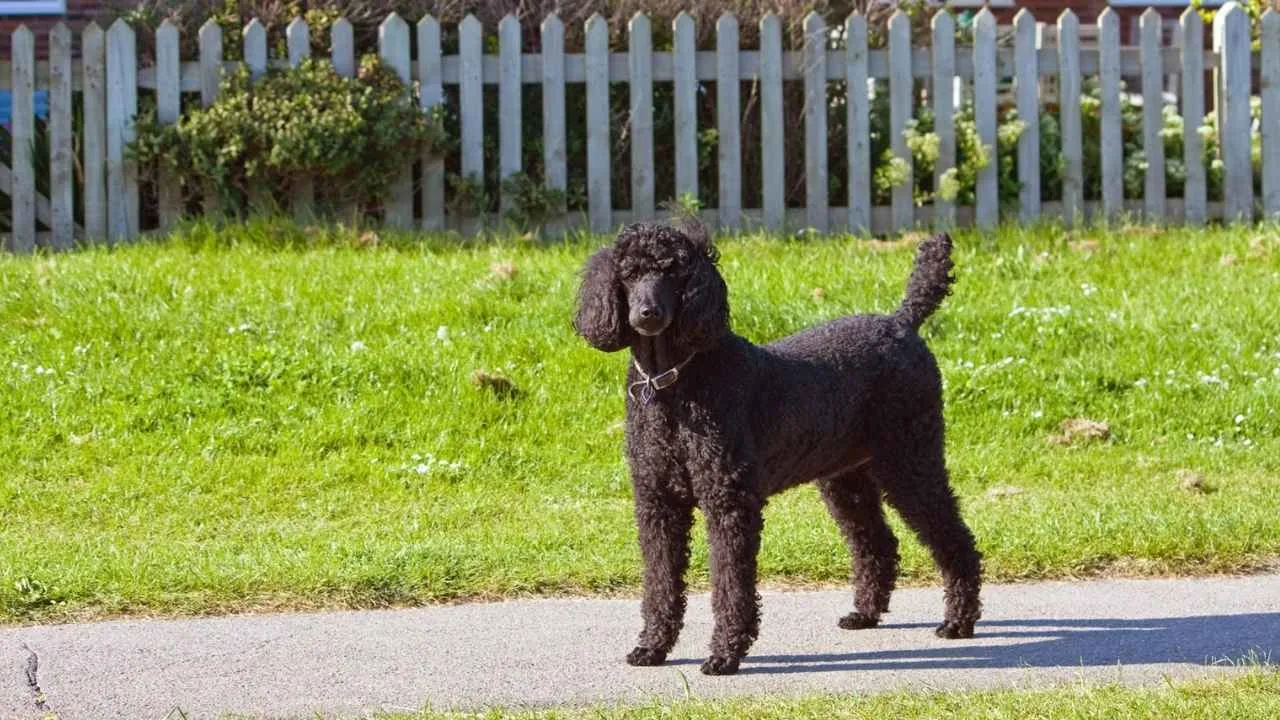
Poodles originated in Germany as water retrievers, though France later became the country most associated with the breed. Their intelligence is legendary, and that sharp mind made them prized performers and companions. They come in three sizes—Standard, Miniature, and Toy—each with the same lively personality but different space needs.
The breed’s curly coat is its most distinctive feature. It rarely sheds but needs regular brushing and trimming to avoid matting. For a café visit, that coat has a bonus: minimal loose hair on chairs and laps.
PetMD states that Poodles are remarkably trainable and thrive when given structure. They enjoy learning tricks, commands, and routines, making them one of the easiest breeds to manage in public spaces. Their responsiveness means they adjust well to the rhythms of a busy café.
They are social but not overly clingy, often striking a pleasant balance between greeting strangers and calmly relaxing. A Poodle is just as comfortable lying at a table’s edge as it is soaking up compliments from passersby.
Daily activity is a must—walks, games, or even agility practice keep them sharp. That energy, when directed well, makes Poodles charming companions for owners who love to take their dogs everywhere.
Fun Fact
Poodles’ distinctive grooming styles were originally practical trims for swimming, leaving fur to protect joints while clearing weight from the rest of the body.
5. Beagle
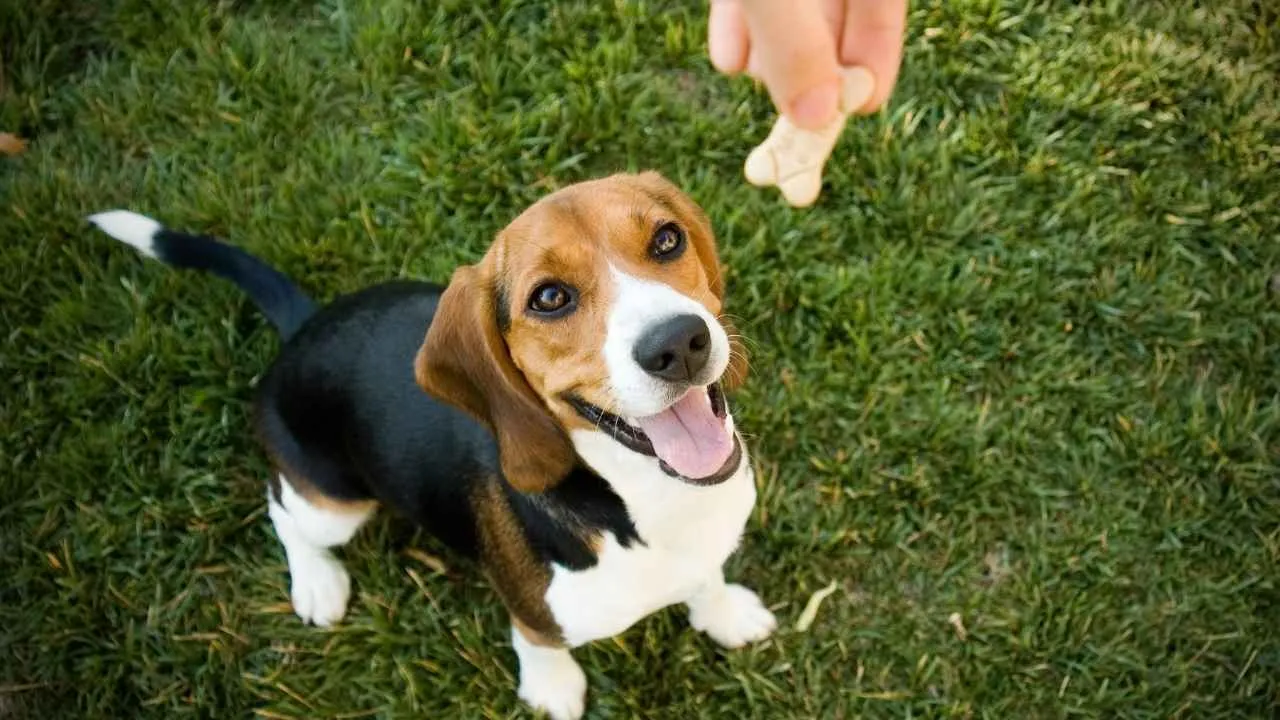
Beagles were bred as scent hounds in England, valued for tracking small game with incredible persistence. Their strong noses and lively temperaments have made them one of the most recognizable and beloved breeds in the world. They bring that same curiosity and cheerfulness to urban outings.
Small to medium in size, Beagles are easy to guide through crowded spaces. Their friendly demeanor tends to draw attention, and they rarely shy away from meeting new people. They are happiest when included in whatever their humans are doing.
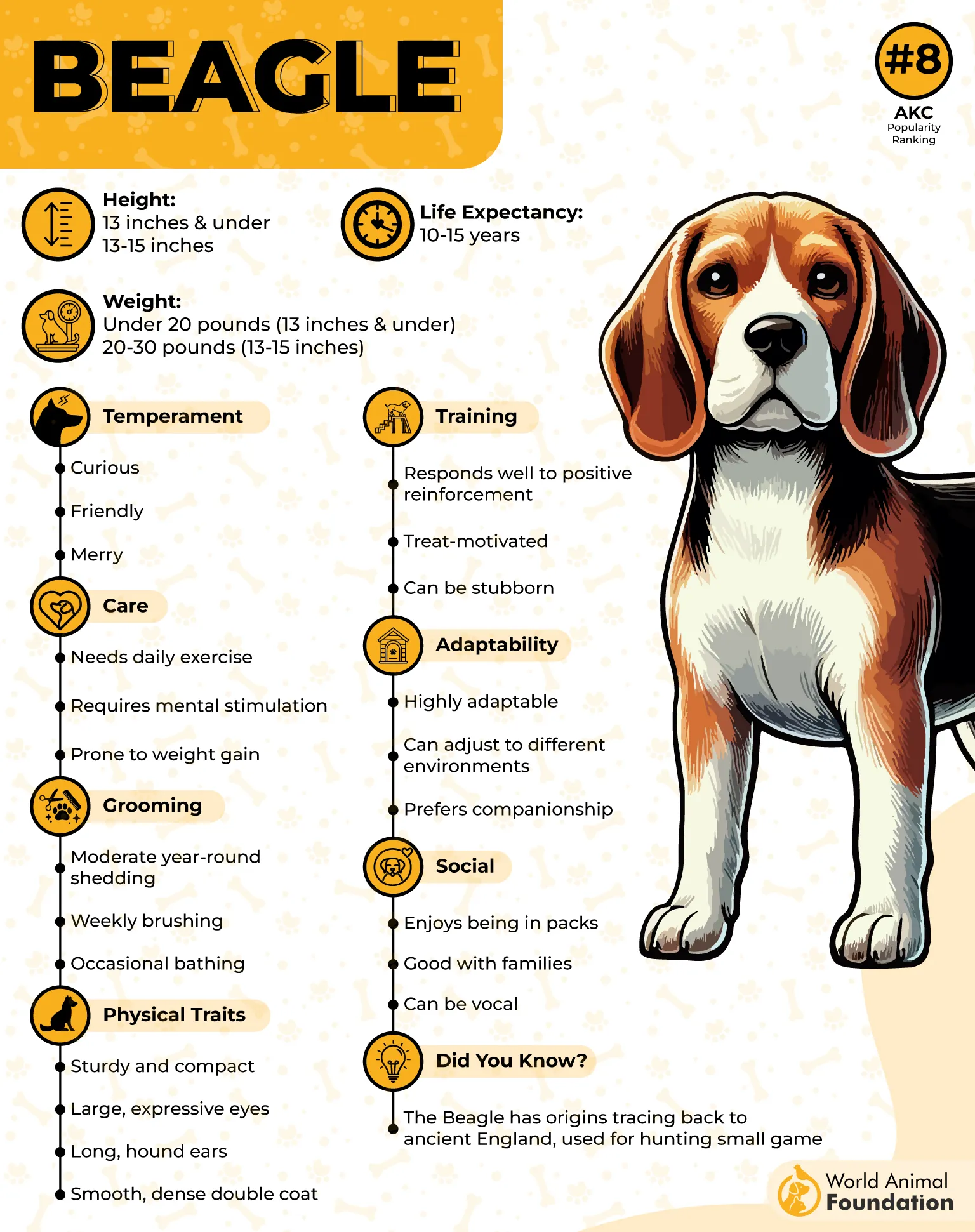
Training Beagles can require patience. Their powerful scent drive means they are easily distracted by new smells, even in a café. Short, consistent sessions and rewards help keep their focus where it needs to be.
Their short, dense coats are easy to care for, needing only a quick brushing to keep them tidy. They do shed lightly year-round, but their grooming needs are modest. Their big brown eyes and expressive faces do the rest of the work in winning hearts.
Beagles need plenty of exercise and mental stimulation to stay balanced. A well‑exercised Beagle will happily curl up for a café break, tail thumping whenever a stranger says hello.
Fun Fact
Beagles can have more than 220 million scent receptors—one reason they’re so famously used in airport security to sniff out contraband.
6. Cavalier King Charles Spaniel
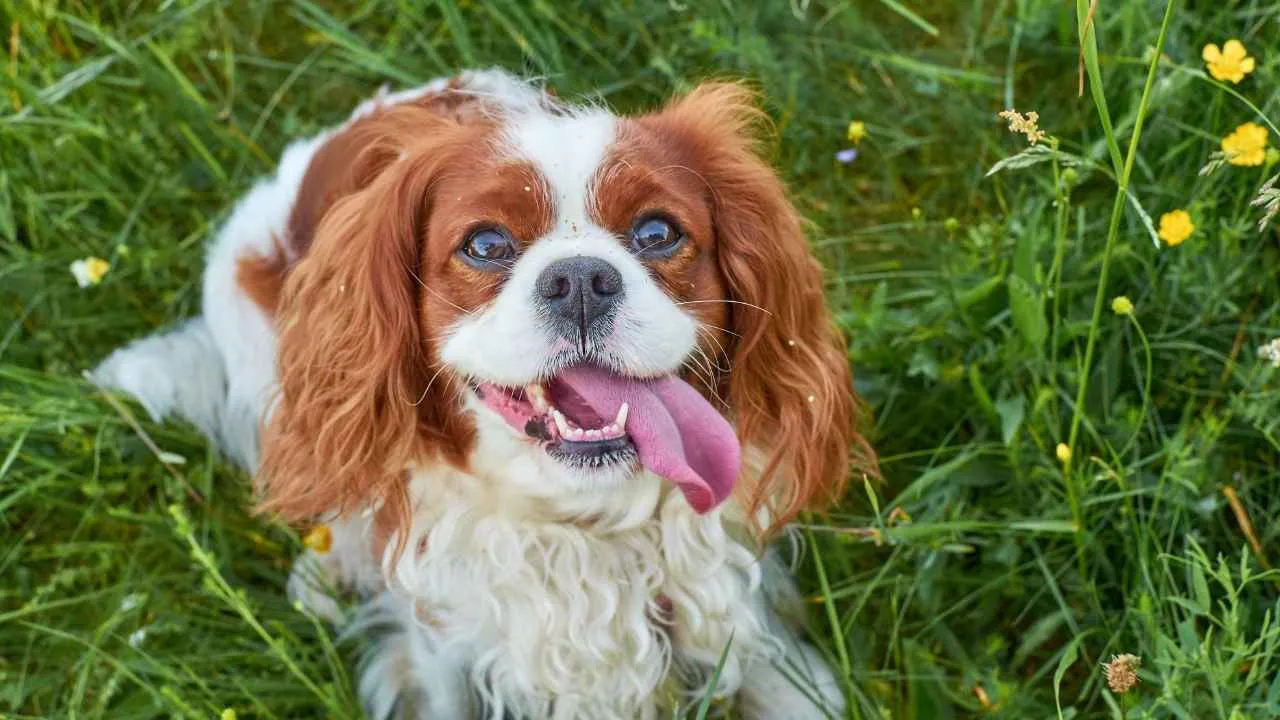
The Cavalier King Charles Spaniel is a breed with royal connections, beloved by English nobility for centuries. Their lineage traces back to toy spaniels depicted in paintings alongside aristocrats. That long history as a companion is clear in the way they bond so closely with their owners.
Cavaliers have a gentle, affectionate nature that makes them easy café company. They slip onto a lap or settle gracefully by a chair, content simply to be nearby. They thrive on closeness and return every bit of attention they receive.
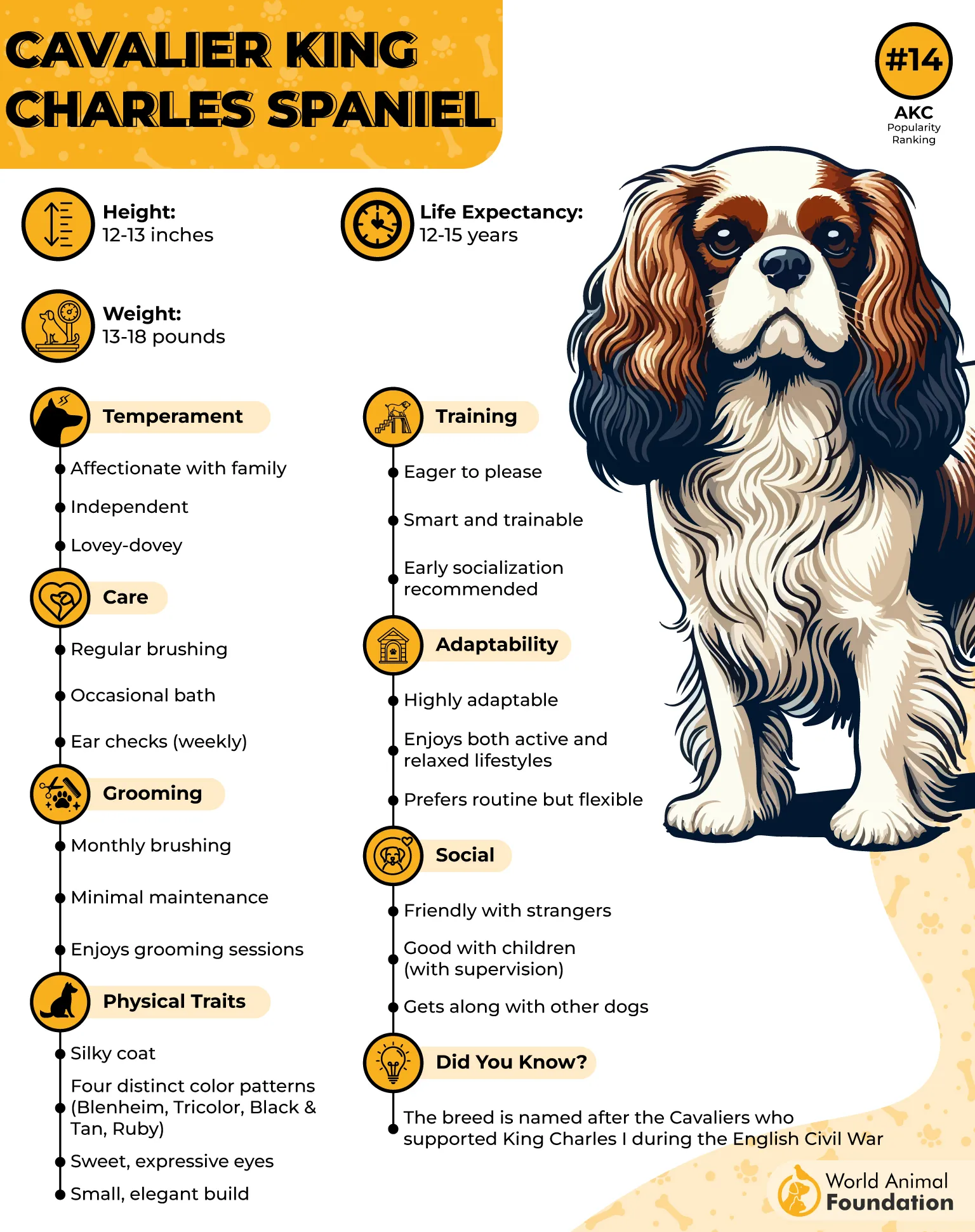
Their silky, feathered coat benefits from regular brushing to prevent tangles. It isn’t difficult to maintain, but does require consistency to keep the breed looking its best. Light shedding means a few stray hairs, but nothing unmanageable.
Cavaliers are eager learners and typically respond well to training. They do best with gentle, patient methods and rarely resist commands, making them effortless to manage in busy spaces.
Though not built for guarding, they are alert and curious, responding to sounds and movement without ever seeming nervous. Their steady temperament is part of what makes them such treasured companions in public settings.
Fun Fact
Cavalier King Charles Spaniels were named for King Charles II, who adored the breed so much that he allowed them free access to royal palaces.
7. Boxer

Boxers are a blend of strength and playfulness, a breed created in Germany from Bullenbeisser hunting dogs and other working breeds. They were built for stamina and courage, but over time, they became spirited, loyal family companions. Their athletic frame carries a surprising amount of charm.
Despite their muscular build, Boxers are famously goofy and affectionate. They love being part of the action, whether it’s a café stop or a neighborhood stroll. Their enthusiasm often turns heads and earns them instant fans.
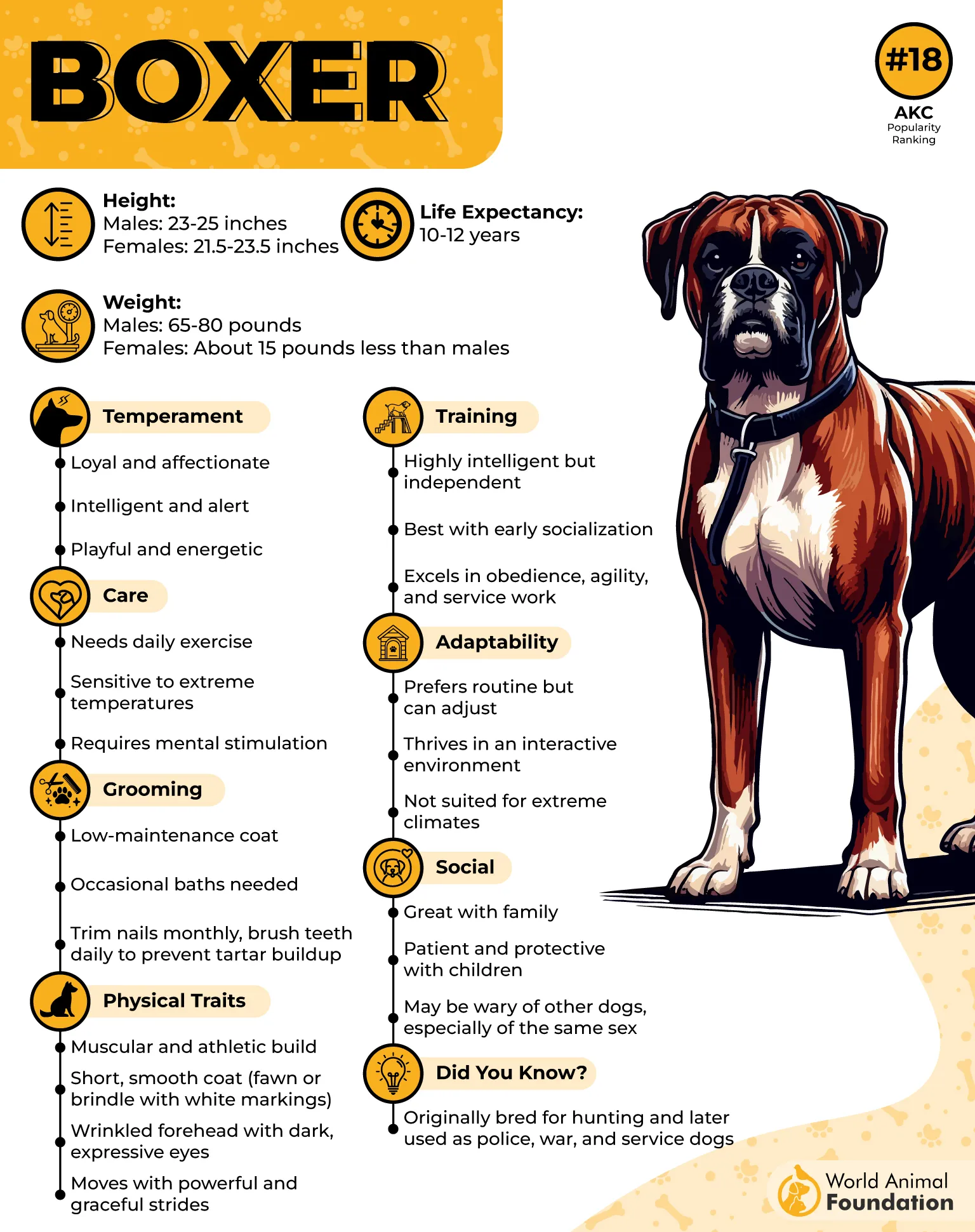
Britannica states that Boxers need consistent training to channel their energy. They’re intelligent and eager to learn, but can be stubborn if handled harshly. Positive reinforcement helps them settle into good habits, including sitting calmly in public places.
Their short, sleek coats are easy to care for, needing little more than occasional brushing. They shed lightly, and their grooming routine is refreshingly simple. Their expressive faces—complete with deep eyes and a signature underbite—tell everyone exactly how they’re feeling.
These dogs crave daily exercise and thrive on games and long walks. When their energy is well spent, they can be surprisingly mellow, stretching out by a café table and watching the world go by.
Fun Fact
Boxers earned their name from their playful tendency to “box” with their front paws during play and interaction.
Conclusion
Choosing a dog that thrives in cafés is a decision that reaches beyond a simple coffee stop. Many of these breeds are just as comfortable at a dog park as they are curled up beside a table, blending into city life with ease. Their eager faces and willingness to share quiet moments make them a wonderful breed for almost everyone considering adopting.
Some of these pups are energetic dogs who need much exercise, long walks, and playtime to keep their huge personalities in balance. Others are easygoing dogs, natural lap dogs who simply enjoy affection and the company of their people. Each one offers something unique, from gentle giants that need enough space to small companions suited for apartment life.
Deciding on a new dog means thinking about kids, other animals, and whether you have the free time to meet their needs. High-energy dogs will expect daily activity and plenty of room to roam, while calmer breeds slip easily into apartment routines. A house with a yard, a cozy flat, or shared spaces in the city can all be suitable when matched to the right temperament.
Many of these dogs come from shelters or rescue groups, ready to bring their friendly nature into a new home. They are active, sweet, and often easy to train, creating bonds that last a lifetime. Their presence fills homes with affection and turns ordinary outings into shared adventures.
Talking to shelters and learning about these animals helps owners find the pup that fits their lives—and turns an ordinary coffee run into one of the happiest parts of the day.


